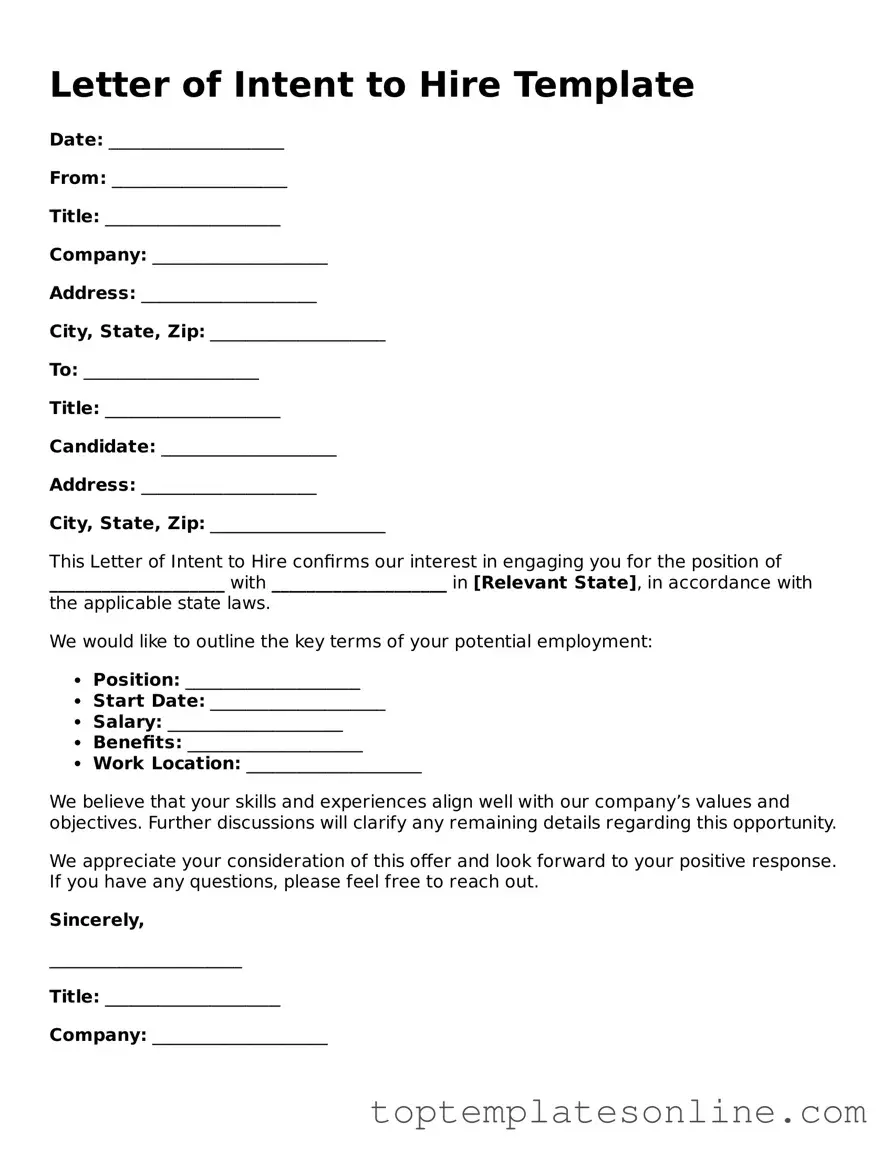Attorney-Approved Letter of Intent to Hire Form
A Letter of Intent to Hire is a document that outlines the preliminary agreement between an employer and a potential employee, indicating the employer's intention to offer a job. This form serves as a foundational step in the hiring process, helping both parties understand the terms of employment before a formal contract is finalized. By clarifying expectations, it fosters transparency and sets the stage for a successful working relationship.
Customize Letter of Intent to Hire Here
